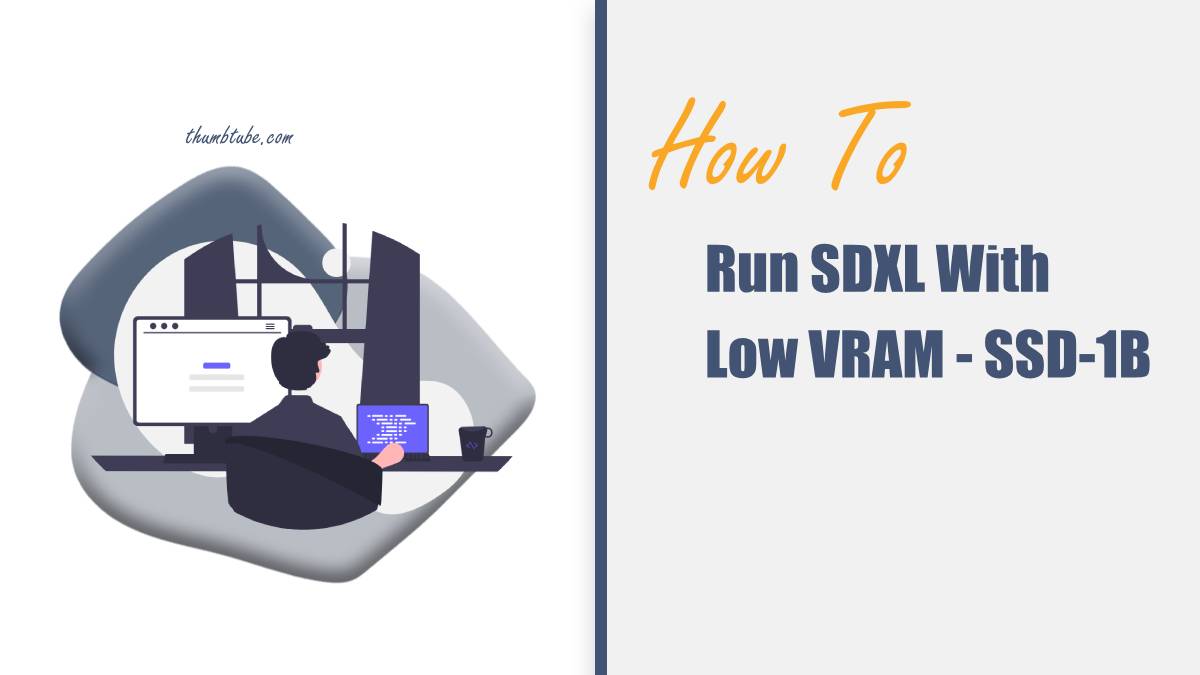SDXL, or Super Deep Learning Accelerator, is a powerful tool for accelerating deep learning tasks, enabling researchers and practitioners to train and deploy complex models efficiently. However, running SDXL with low VRAM (Video Random Access Memory) can pose challenges, potentially limiting performance and hindering productivity. To address this issue, SSD-1B, or Solid-State Drive with 1B capacity, offers a solution by leveraging storage resources to augment VRAM capacity. In this article, we’ll explore how to maximize SDXL performance with low VRAM using SSD-1B, including setup, optimization, and best practices.

1. Understanding SDXL and VRAM
– SDXL is a hardware accelerator designed to speed up deep learning tasks by offloading computation from the CPU to specialized processing units, such as GPUs or TPUs.
– VRAM, also known as GPU memory, is essential for storing model parameters, intermediate computations, and data during training and inference.
– Limited VRAM capacity can lead to performance bottlenecks, particularly when working with large models or datasets that exceed available memory.
2. Introducing SSD-1B
– SSD-1B is a high-capacity solid-state drive optimized for deep learning workloads, offering storage resources to supplement VRAM capacity.
– By utilizing SSD-1B as virtual memory, users can extend the effective VRAM capacity, allowing them to work with larger models and datasets without encountering memory constraints.
3. Setting Up SSD-1B for SDXL
– Begin by installing SSD-1B on your workstation or server, ensuring compatibility with your existing hardware and software environment.
– Configure SSD-1B as virtual memory using the appropriate software tools or operating system settings.
– Allocate a portion of SSD-1B capacity to serve as swap space, effectively expanding the available memory pool for SDXL tasks.
4. Optimizing SDXL Performance with SSD-1B
– To maximize performance, prioritize data locality and minimize data movement between VRAM and SSD-1B.
– Optimize your deep learning workflows to minimize memory usage and reduce the frequency of disk swaps.
– Implement caching mechanisms and prefetching strategies to minimize latency when accessing data from SSD-1B.
– Experiment with different batch sizes, learning rates, and optimization algorithms to find the optimal configuration for your specific workload.
5. Monitoring and Tuning
– Regularly monitor system performance and resource utilization to identify potential bottlenecks and optimize system configuration.
– Use profiling tools and performance metrics to analyze the impact of SSD-1B on SDXL performance and identify areas for improvement.
– Fine-tune SSD-1B settings, such as swap space allocation and caching parameters, based on performance feedback and workload characteristics.
6. Best Practices for Running SDXL with Low VRAM
– Prioritize model and data optimization techniques to minimize memory usage and maximize efficiency.
– Batch data processing tasks to reduce memory overhead and improve throughput.
– Use data augmentation and compression techniques to reduce the size of input data and intermediate computations.
– Consider model parallelism and distributed training strategies to distribute memory and computation across multiple devices or nodes.
7. Future Considerations and Developments
– As deep learning models continue to grow in complexity and size, the demand for scalable and efficient memory solutions will increase.
– Keep abreast of advancements in hardware architecture, storage technology, and memory management techniques to stay ahead of the curve.
– Explore emerging technologies, such as non-volatile memory (NVM) and hardware accelerators, to further optimize SDXL performance and scalability.
Running SDXL with low VRAM presents unique challenges, but with the advent of SSD-1B, users can augment VRAM capacity and unlock new possibilities for deep learning tasks. By following the steps outlined in this guide, including setting up SSD-1B, optimizing performance, and implementing best practices, users can maximize SDXL performance and efficiency even in resource-constrained environments. As deep learning continues to evolve, leveraging innovative solutions like SSD-1B will be essential for pushing the boundaries of what’s possible in AI research and development.
